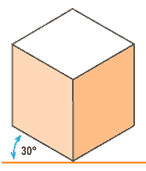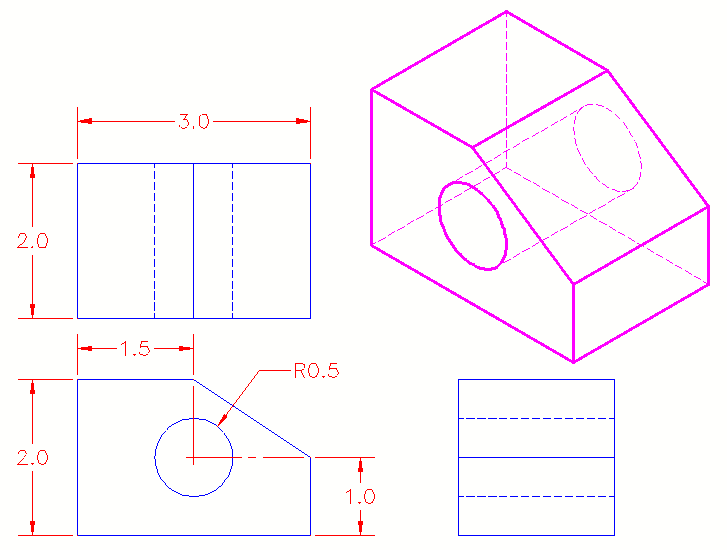ARTIST
Computer Aided Design

Properties of Isometric drawing :
- 3D drawings
- Show three sides, all in dimensional
- No true shape with 90 degree corners
- All vertical lines are drawn vertically
- All horizontal lines are drawn to the base line at 30 degrees
- One of a family of three-dimensional views called pictorial drawings.
Isometric comes from Greek for equal measure. This is because isometrics don’t use a vanishing point system, instead lines fall onto a 30 degree grid.
The most important characteristic of an isometric drawing is that the horizontal lines are drawn to the base line at 30 degrees. As shown below;
However, there is a difference between isometric drawing and projection.
Isometric projection is a true or accurate representation of an object on the
isometric scale or measurement along the isometric axes. This is about 18% short of the actual dimensions of the object.
In practice, a regular length of one unit is drawn as one unit on the isometric axis,
thus introducing some error to the projection.
Hence, the actual images of object shown in isometric views are, therefore, called isometric drawings and not isometric projections.
The main difference between an isometric projection
and an isometric drawing is size. The drawing is
slightly larger than the projection because it is
full scale.
Isometric projection is another type of axonometric drawing apart of dimetric and trimetric drawing.
Strength
Becoming very popular in magazines and newspapers as isometrics are being used more and more by artist with no technical illustration background.
Weakness
Dont give enough information about an object because you can’t see the exact shape and size of each feature.
Examples of isometric drawings:


Isometric drawing


